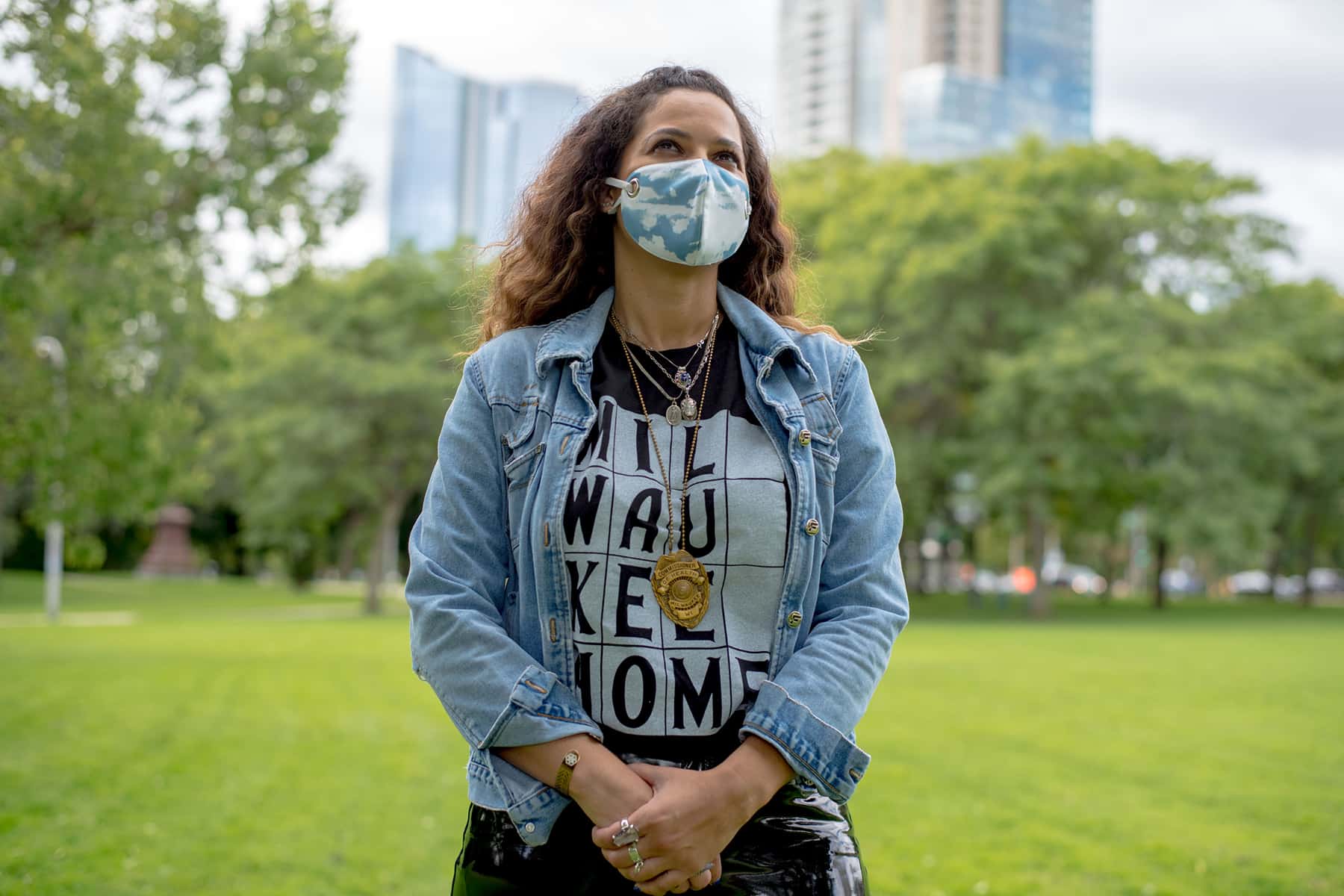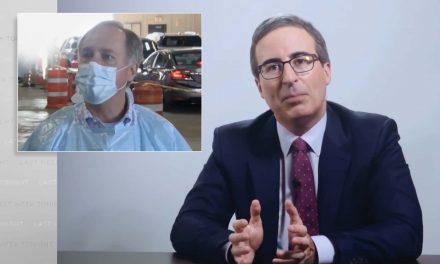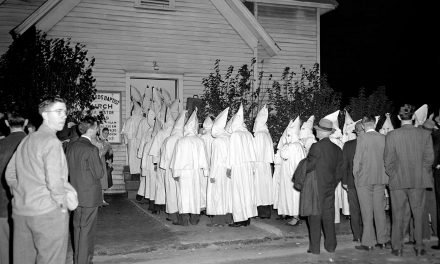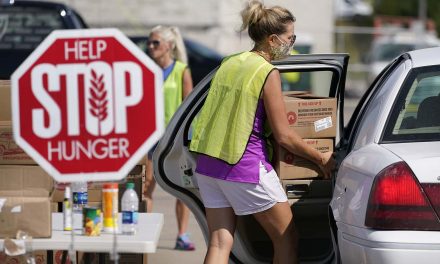
When the coronavirus started spreading around Wisconsin in the spring of 2020, Dr. Chad Tamez hosted Facebook Live sessions to help patients understand the mysterious new pathogen. But the family physician in West Bend stopped the online tutorials after a few weeks as the pandemic became increasingly political.
More than a half year later, the medical world has expanded its understanding of COVID-19, the disease caused by the virus. Multiple vaccine candidates have reached late-stage trials, and epidemiologists have mapped how the virus spreads and attacks the human body. Those advances draw on rivers of data about COVID-19 — flowing daily from medical and public health researchers in Wisconsin and worldwide.
But some of Tamez’s patients remain deeply skeptical about the severity of disease, he said, even as the coronavirus infects and kills growing numbers of Wisconsinites, overwhelming hospitals.
“I know people who think masking is foolish and think that the numbers are inflated or falsified, or that this is all just going to disappear after the election,” Tamez said.
Fueling those feelings: viral misinformation permeating American life in 2020, as increasingly large swaths of a polarized populace take their cues from social media. Wisconsinites have grown weary of the pandemic, relaxing their behaviors and ignoring public health guidance to slow the spread of COVID-19. The result is a public health nightmare: Officials must simultaneously wage war on a pandemic and a parallel “infodemic” of false, misleading and dangerous claims that downplay the severity of the disease.
These conspiracy theories, many rooted in misleading interpretations of COVID-19 data and partisan animosity, are complicating efforts by doctors and public health officials to encourage mask wearing, distancing and other actions to quell the pandemic. As their exhaustion grows, so does the pandemic’s grip on Wisconsin — in a deadly, fast-churning cycle.
A CDC report sparks a conspiracy
In an August report about COVID-19 deaths in the United States, the Centers for Disease Control and Prevention confirmed a now commonly understood fact: People who already face serious health challenges are more likely to die from the disease.
“For 6% of (COVID-19) deaths, COVID-19 was the only cause mentioned,” the CDC noted in an analysis of more than 150,000 death certificates. “For deaths with conditions or causes in addition to COVID-19, on average, there were 2.6 additional conditions or causes per death.”
That dry assessment of COVID-19’s toll on Americans with pre-existing health conditions initiated a frenzy of conspiratorial indignation. A booster of the QAnon conspiracy theory — a right-wing movement with anti-Semitic roots whose adherents falsely believe a cabal of Satan-worshiping pedophiles runs the world — seized on the CDC report. That person’s tweet quoted a Facebook post inaccurately claiming that the federal agency had “quietly updated the COVID number to admit that only 6% of all the 153,504 deaths recorded actually died from COVID.”
Similar false claims swept major social media platforms. President Donald Trump retweeted the falsehood before Twitter removed the tweet and other platforms alerted users to the misinformation. But nothing could undo the damage.
“I can’t tell you how many times I saw that one reposted on Facebook,” Tamez said.
A shifting (mis)information diet
The nature of the pandemic makes it fertile ground for conspiracy theories, which thrive on anxiety and other negative emotions.
“Misinformation about COVID (is) almost a perfect carrier for the kind of viral fear and anger that then spreads through social media networks,” said Lewis Friedland, a professor of journalism and mass communication at the University of Wisconsin-Madison who studies how shifting media trends affect politics and society.
As newspapers struggle, people are increasingly turning to social media to try to understand the world. The trend comes as the pandemic forces Americans to rely on the internet more than ever before — for work, school, socializing and news. When millions of Americans stayed close to their screens during stay-at-home orders in the spring of 2020, nearly half of social media users who responded to a Gallup survey reported that coronavirus content accounted for “almost all” or “most” of what they saw on their feeds.
Polling suggests most Wisconsinites have favored Gov. Tony Evers’ efforts to slow the virus through public health restrictions, although that majority has shrunk as the pandemic drags on.
A Marquette University Law School poll in March showed that 86% of voters viewed the closing of schools and some businesses to slow the spread of the coronavirus as appropriate. That support slipped to 69% by May after Evers’ administration extended the stay-at-home order — a move that brought an angry protest to the Wisconsin State Capitol, with attendees decrying economic harms and infringements on freedom.
The aggrieved also congregated online, where Facebook groups such as Open Wisconsin Now and Wisconsinites Against Excessive Quarantine turned into forums for conservative and libertarian ideologies, distrust of authority and anti-science sentiment — creating an alternative narrative about the pandemic.
That includes falsely interpreting the CDC’s analysis of COVID-19 death certificates. An August 25 post in Wisconsinites Against Excessive Quarantine, a 120,000-member private group created by a family of gun rights activists, offered a version of the conspiracy theory.
Those disinclined to believe the virus is deadly could easily digest the simple statement “for 6% of the deaths, COVID-19 was the only cause mentioned,” because it lacked proper context. And it struck an emotional chord with group members determined to find evidence of a government plot to overstate the dangers of the disease.
Confusing math, questionable claims
Opponents of pandemic-related restrictions have also circulated more subtle forms of misinformation. The MacIver Institute, a conservative think tank based in Madison, published an anonymously authored article in late September accusing the Wisconsin Department of Health Services of using “bad math” in calculating daily figures on positive COVID-19 tests — a key set of statistics that gauge the severity of outbreaks.
The rates can be calculated in different ways, according to the CDC. Common methods include: dividing all positive tests by total tests; dividing the number of people with positive tests by total tests; or by dividing the number of people with positive tests by all people tested. These methods produce different daily results, but if performed correctly, show whether outbreaks are growing or shrinking.
The CDC uses the first method, citing the limited data it receives from some states. From the beginning of the pandemic, Wisconsin’s DHS has chosen a different method: dividing the number of people with positive results by all people tested from the beginning of the pandemic. In doing so, the agency has included only individuals’ initial negative test results in its calculations. As more repeat testing occurs, incrementally more daily negative test results are left out of the state’s positivity-by-people calculations.
MacIver, which has a history of misrepresenting data to downplay the severity of the pandemic, falsely described the state’s methodology as a “systematic error” and accused the agency of “tossing hundreds of thousands of negative test results” by calculating the metric in this different — but accepted — way.
Ajay Sethi, a public health and infectious disease epidemiology researcher at the UW-Madison, called the accusations unnecessarily alarmist.
“Nobody is being a renegade and doing something that’s not CDC protocol,” he said.
Still, Sethi added there is some merit to MacIver’s contention that excluding individuals’ repeated negative results from positivity calculations could eventually affect the trend.
“[B]ut we [are] not at that point,” he said.
Sethi called the DHS method for calculating positivity — people over people — “the best way to do it … because the disease affects people.”
This method helps epidemiologists understand how the disease is spreading in a population, Sethi said. Measuring positivity by tests — the CDC’s method and what MacIver advocates — is less helpful for understanding that question, he added, especially when many people are receiving multiple tests.
Still, any one of the CDC’s outlined tracking methods has merit, said Sethi, so long as it’s consistent — to allow for tracking trends over time. At the end of September, MacIver took credit for the DHS move to also start tracking COVID-19 positivity by tests alongside its original method. Bill Osmulski, a long-time Wisconsin conservative political writer, told WisContext he authored the MacIver articles and was “very pleased” the state added the metric.
DHS Secretary-designee Andrea Palm said the additional calculations help contextualize the agency’s data. Sethi reiterated that test-positivity, no matter how it’s calculated, cannot solely signal the severity of the pandemic.
Consequences of misinformation
Public health officials in Wisconsin are facing increasing challenges against the whirlwind of coronavirus misinformation and animosity. Jeanette Kowalik, who resigned as health commissioner for the city of Milwaukee in September, said misinformation combined with racism and sexism she faced prompted her to leave for another job. But Kowalik said she doesn’t blame anyone for reacting to confusing and sometimes changing official statistics with skepticism.
Kowalik did blame social media for spreading much of the misinformation her department combated in the early days of the pandemic — including false claims about the susceptibility of Black people to the coronavirus or accusations that people of East Asian descent were to blame for its spread.
Kowalik said conspiracy theories surrounding CDC death statistics and other misperceptions about the COVID-19’s severity could offer people a false sense of security — especially for people at higher risk of serious disease or death.
“I’m one of those people — I’m high risk,” she said. “I have multiple autoimmune conditions. Does that mean it’s OK if I die prematurely?”
Kowalik is not the only public health officer in Wisconsin to quit under the mounting pressure of misinformation and pandemic politics.
The health officer for Sauk County, Tim Lawther, resigned in October, citing political pressure from county leaders to ignore pandemic-related science.
And in Sheboygan County, officials in September shelved a proposal to use local COVID-19 data to inform new county health orders. It also would have boosted the local health officer’s enforcement power. Facebook groups trafficking in misinformation fomented a backlash that led the county board to pull the proposal.
The saga unfolded after “a local radio station incorrectly reported that the county was seeking to force people to be vaccinated, close businesses, put people in jail, and that the county board was going to vote on the proposed ordinance the next day,” wrote Sheboygan County Administrator Adam Payne in an article for the Wisconsin Counties Association.
“Facebook went wild and the damage was done,” Payne added.
A pandemic election
The pandemic’s outsized role in the presidential election further magnified the misinformation problem. Trump is perhaps the nation’s most prominent purveyor of inaccurate information about the disease. He has habitually offered a rosier outlook of the pandemic than his administration’s health experts, and has advocated treatments that range from unproven to dangerous. Even after an October 2020 outbreak at the White House infected Trump along with a number of high-level officials, he resisted new infection-control precautions upon returning from the hospital.
Trump’s political appointees have followed his lead, undercutting scientists’ recommendations and downplaying the disease’s severity.
Wisconsin Republicans also appear to be taking their cues from Trump. U.S. Representative Tom Tiffany, R-Hazelhurst, declined to adhere to public health recommendations about physical distancing and the use of face masks at campaign events. He was one of 17 Republicans who on October 2 voted against a bipartisan U.S. House resolution condemning QAnon, and he boosted the MacIver Institute’s misleading claims about state data.
U.S. Sen. Ron Johnson attended a party fundraiser while awaiting COVID-19 test results, another violation of public health guidance. He later tested positive. Even after his diagnosis, Johnson decried what he termed “unjustifiable hysteria” over the disease that has killed more than 230,000 Americans in about nine months. And Johnson said he remained opposed to mask mandates, agreeing with Republicans seeking to overturn a mandate ordered by Evers.
Confronting the infodemic
Amanda Simanek, a professor of epidemiology at UW-Milwaukee, called combating misinformation “a key component” of public health officials’ pandemic response.
“It’s not just treating patients,” said Simanek. “It’s not just testing. It’s not just contact tracing. Parallel to that, we have to help translate the science … in a way that manages misinformation.”
Simanek is part of Dear Pandemic, a group of women epidemiologists and other researchers who are using social media and online reports to explain COVID-19 and tackle misinformation. But fighting misinformation without inadvertently spreading it further is tricky.
“We don’t love to necessarily focus on amplifying a toxic message,” said Lindsey Leininger, a professor at Dartmouth College and group member. “Instead, we flip the narrative, and we talk about the durable lesson that comes from each piece of toxic misinformation.”
In West Bend, Tamez said he’s focused on having respectful conversations with his pandemic-skeptical patients. He’s steering them toward sources like the CDC and state DHS, but he understands why they might fall prey to inaccurate information.
“I think people are tired, and they just want some good news,” said Tamez. “And so any bit of good news, even if it’s misinformation, seems to spread like wildlife.”
Tamez, who said his daughter tested positive for COVID-19 in mid-October after likely being exposed at school, added that the pandemic is increasingly hard to miss in his community as cases surge — even if people want to ignore it.
“I guarantee you, three months ago people were looking at each other going, ‘I don’t even know anyone who has this, do you? This seems fake,’ ” he said. “And now, I can almost guarantee you every person in the county knows someone personally who has it.”
Will Cushman
Will Cioci
The nonprofit Wisconsin Center for Investigative Journalism collaborates with Wisconsin Public Radio, Wisconsin Public Television, other news media and the UW-Madison School of Journalism and Mass Communication. All works created, published, posted or disseminated by the Center do not necessarily reflect the views or opinions of UW-Madison or any of its affiliates.















